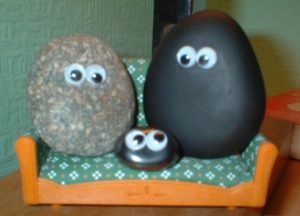Collectibles can be almost anything… from coins, baseball cards, stamps, tins, bottle caps, rocks, wall art, toys, and on and on.
Collectibles are all about personal enjoyment and personal satisfaction.
Usually, the reason that a person begins to collect anything is because of an emotional attachment or how a particular item makes them feel.
Sometimes people begin to collect something that is attached to a historical event or a deep personal experience or a special memorable occasion.
However, when talking with people who are in the business of reselling, the most common question is ‘What makes a collectible a collectible?’
Truth be told, what most re-sellers really want to know is ‘What makes a collectible VALUABLE??
A very good question for sure.

Unfortunately, there is no hard and fast answer to this question, in fact, the answer is mostly speculative, however, there are some points to consider when buying a collectible as an investment or when the intent is to resell a collectible for a profit in the future.
It is important to note that a collectible that you buy today, may be worth more or less or nothing, depending on what someone else is willing to pay for your collectible in the future.
The monetary value that a person may attach to a collectible may depend on emotions or feelings that are conjured up within a person when they see, touch, and experience the collectible.
Sometimes, a collectible may spark a unique memory of a particular time and a place, or maybe even a special person, in their own personal lives.
However, if you are a re-seller, or are interested in purchasing collectibles as an investment, then the monetary value of a particular collectible depends on some other VERY REAL factors:
- Condition: The closer a collectible is to MINT CONDITION the more cash value a collectible will bring. Things like fading, scratches, broken or missing pieces can drastically reduce a collectibles cash value
- Packaging: Original packaging adds a tremendous cash value to a collectible, and in some cases, minimal damage may be insignificant to the cash value of a particular collectible
- Production Date: If the date and time can be proven of a particular collectible and if that date and time has significant historical impact, it may increase the cash value of a collectible
- Provenance: Authenticating the place of origin, or the earliest known history, of a collectible, a work of art, or an antique, by having a physical record of ownership can dramatically increase cash value
- Scarcity: Collectibles which are in short supply have the potential to garner a high cash value in the marketplace where there is a high demand for a particular collectible
These are just a few factors you should consider when evaluating the monetary value of a collectible when considering purchasing collectibles as an investment or for profit.
In closing, there is one sure-fire-way to guarantee that you cannot go wrong when buying any collectible at any price: BUY WHAT YOU LOVE
If you buy what you love, then it really does not matter what the item will be worth in the future, because it means everything to you.
Happy Shopping!